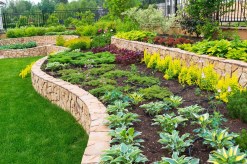Choosing the Right Concrete Pool Coping for Your Outdoor Oasis
When it comes to creating a stunning outdoor oasis, one element that shouldn’t be overlooked is the pool coping. Concrete pool coping not only serves as a functional and protective edge for your swimming pool, but it also adds a touch of style and elegance to your overall design. With so many options available in the market, choosing the right concrete pool coping can be overwhelming. In this article, we will explore different types of concrete pool coping and provide valuable tips on how to select the perfect one for your outdoor space.
Traditional Poured Concrete Coping
One of the most common types of concrete pool coping is traditional poured concrete. This type of coping offers a clean and classic look that complements any style of swimming pool. Traditional poured concrete coping is versatile and can be customized to match your desired shape, size, and color. It provides a seamless transition between the pool deck and the water’s edge, creating a visually appealing finish.
However, it’s important to note that traditional poured concrete coping requires regular maintenance to keep its appearance intact. Over time, exposure to harsh weather conditions and chemicals can cause fading or cracking. To ensure its longevity, it’s recommended to seal the surface regularly and address any repairs promptly.
Precast Concrete Coping
If you’re looking for an option that combines durability with aesthetic appeal, precast concrete coping might be the perfect choice for you. Precast concrete copings are manufactured off-site under controlled conditions, ensuring consistent quality and strength. This type of coping comes in various shapes, sizes, textures, and colors, allowing you to create a customized look that suits your outdoor oasis.
Precast concrete copings are relatively easy to install since they come pre-formed with interlocking mechanisms or anchor systems that securely hold them in place. Their non-slip surface provides added safety around the pool area while enhancing its visual appeal.
Natural Stone Coping
For those seeking a more luxurious and sophisticated look, natural stone coping is an excellent option. Natural stone copings are crafted from materials like travertine, limestone, or granite, each offering unique textures and colors that can elevate the overall aesthetic of your outdoor space.
Natural stone copings are known for their durability and resistance to weathering, making them an excellent long-term investment. However, it’s important to consider that natural stone coping requires regular maintenance to prevent staining and ensure its longevity. Sealing the surface and cleaning it with appropriate solutions will help preserve its beauty over time.
Brick Coping
If you prefer a more rustic or traditional look for your outdoor oasis, brick coping might be the perfect choice for you. Brick copings offer a charming and timeless appeal that adds character to any pool design. They come in various colors, sizes, and patterns, allowing you to create a unique look that matches your personal style.
Brick copings are highly durable and require minimal maintenance. However, it’s essential to choose bricks specifically designed for pool coping to ensure they can withstand exposure to water and chemicals without deteriorating over time.
In conclusion, choosing the right concrete pool coping is crucial for creating a functional yet visually appealing outdoor oasis. Whether you opt for traditional poured concrete coping, precast concrete coping, natural stone coping, or brick coping depends on your desired style and budget. Consider factors such as durability, maintenance requirements, safety features, and aesthetic appeal when making your decision. By selecting the perfect concrete pool coping for your outdoor space, you’ll transform your swimming pool into a stunning focal point that enhances the overall beauty of your oasis for years to come.
This text was generated using a large language model, and select text has been reviewed and moderated for purposes such as readability.






